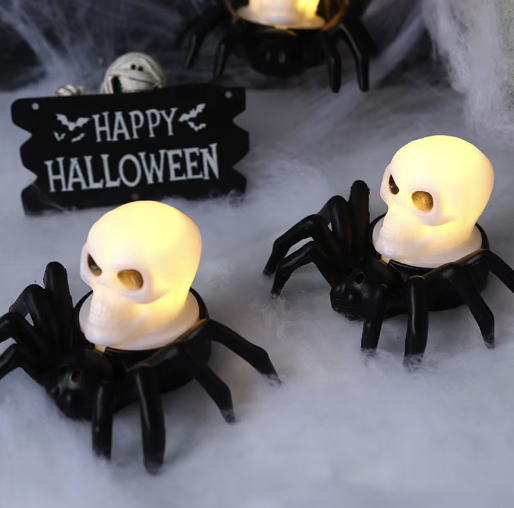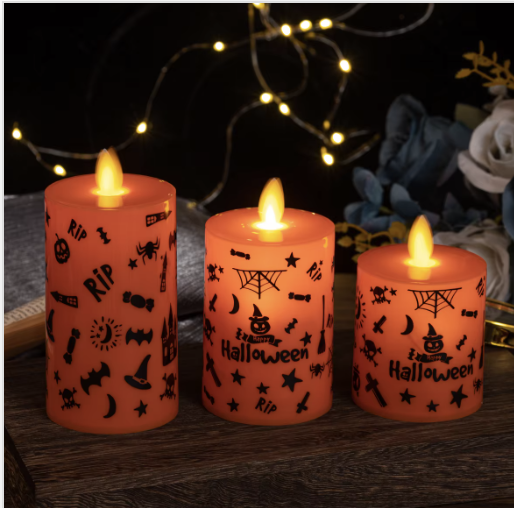ผลกระทบทางอารมณ์ของ ไฟประดับเทศกาล
วิธีที่แสงไฟกระตุ้นการปล่อยโดปามีน
แสงสว่างและสีสันที่สดใสส่งผลต่อการทำงานของสมองเราอย่างมาก เพราะมันช่วยเพิ่มระดับโดพามีน ซึ่งเป็นสารสื่อประสาทที่ทำให้คนเรารู้สึกดีและมีความรู้สึกว่าได้รับรางวัล เมื่อใครสักคนอยู่ในสถานที่ที่เต็มไปด้วยการกระตุ้นทางสายตา สมองของพวกเขาก็จะเริ่มทำงานในส่วนที่เกี่ยวข้องกับรางวัล และหลั่งโดพามีนออกมา ซึ่งช่วยปรับอารมณ์ให้ดีขึ้นอย่างเห็นได้ชัด งานวิจัยบางชิ้นแสดงให้เห็นว่า สีสันที่สดใสและเปลี่ยนแปลงไปรอบตัวเรา สามารถกำหนดอารมณ์ของเราได้ค่อนข้างมาก แม้แต่โทนสีฟ้าเย็น ๆ ที่ใช้ในเทศกาลดนตรีต่าง ๆ ก็มักทำให้ผู้คนรู้สึกสงบลงอย่างน่าประหลาด นักจิตวิทยาส่วนใหญ่จะบอกกับทุกคนที่สอบถามว่า แสงสว่างโดยรวมมีผลต่อความรู้สึกทางอารมณ์ของเรา มันส่งสัญญาณไปยังดวงตาที่กระตุ้นให้เกิดปฏิกิริยาที่ดีใจ คล้าย ๆ กับที่เกิดขึ้นเมื่อแสงแดดส่องผ่านหน้าต่างในวันที่อากาศแจ่มใส นั่นจึงเป็นเหตุผลที่แสงไฟในเทศกาลดนตรีไม่ได้มีไว้เพียงแค่ตกแต่งเท่านั้น แต่มันช่วยสร้างความสุขและความรู้สึกสบายใจในพื้นที่ที่ผู้คนมาชุมนุมกัน
ความคิดถึงและการกระตุ้นความทรงจำ
แสงไฟในเทศกาลมักทำให้คนส่วนใหญ่นึกถึงความทรงจำเก่า ๆ ได้เป็นอย่างดี มันทำให้เราคิดถึงช่วงเวลาในอดีตที่เคยเฉลิมฉลองร่วมกับครอบครัวและเพื่อนฝูง ลักษณะของแสงไฟที่เปล่งประกายหลากสีสันและลวดลายกระพริบบนท้องฟ้ายามค่ำคืน ทำให้หลายคนนึกถึงวันหยุดในวัยเด็ก หรือเหตุการณ์พิเศษที่เคยผ่านมาในอดีต ผู้คนมักมีความรู้สึกอบอุ่นใจเมื่อได้เห็นแสงไฟลักษณะเช่นนี้ มีงานวิจัยบางชิ้นแสดงให้เห็นว่า สมองของเรามีปฏิกิริยาตอบสนองต่อสิ่งเร้าทางสายตามากมาย เช่น แสงไฟ ซึ่งช่วยให้เราหวนรำลึกถึงช่วงเวลาที่มีความสุขอีกครั้ง เมื่อใครสักคนมองไปที่แสงไฟในเทศกาล มักจะเริ่มคิดถึงช่วงเวลาที่ดีในอดีต ความเชื่อมโยงระหว่างสิ่งที่เห็นในปัจจุบันกับสิ่งที่เกิดขึ้นในอดีตนั้น ช่วยให้ชีวิตมีจังหวะที่เข้าใจได้ในเชิงอารมณ์ เป็นเหตุผลว่าทำไมชุมชนจำนวนมากจึงยังคงรักษารูปแบบประเพณีนี้ไว้ให้คงอยู่ต่อไปทุก ๆ ปี
ต่อสู้กับโรคซึมเศร้าตามฤดูกาล (SAD)
หลายคนมีปัญหาเกี่ยวกับภาวะซึมเศร้าตามฤดูกาล (SAD) เมื่อวันสั้นลงและมืดเร็วขึ้น เนื่องจากแสงแดดที่ไม่เพียงพอ แสงสว่างจากเทศกาลต่าง ๆ นั้นกลับมีประโยชน์อย่างมากในการบรรเทาอาการ SAD คล้ายกับการได้รับแสงแดดโดยตรง งานวิจัยชี้ให้เห็นว่า การได้รับแสงสว่างจากแสงไฟที่สวยงามเหล่านี้ ช่วยเพิ่มระดับเซโรโทนินในสมอง ซึ่งมีความสำคัญอย่างมากต่อการรักษาความมั่นคงของอารมณ์และสุขภาพจิตที่ดี คนมักพูดถึงความรู้สึกที่ดีขึ้นเมื่อได้เห็นแสงไฟจากเทศกาลต่าง ๆ ที่ช่วยให้อารมณ์ดีขึ้นในช่วงฤดูหนาวที่อากาศเย็นและท้องฟ้ามืดครึ้ม ไม่เพียงแค่มองสวยงามเท่านั้น แต่แสงเหล่านี้ยังมีผลสำคัญต่อจิตใจของเรา ช่วยสร้างความรู้สึกอบอุ่นและความสุขแม้ในวันที่อากาศหนาวจัดและทุกอย่างดูหม่นหมอง
องค์ประกอบหลักของไฟเทศกาลในการสร้างอารมณ์
แสงนวลสำหรับบรรยากาศที่อบอุ่น
แสงที่นุ่มนวลและกระจายตัวที่เราเห็นตามเทศกาลต่าง ๆ นั้นมีบทบาทสำคัญมากในการสร้างบรรยากาศที่เป็นมิตร ลองนึกถึงโคมไฟที่ห้อยอยู่ตามงานแสดงดนตรี หรือแสงอุ่น ๆ ที่ตกแต่งตามร้านอาหารในงานเฉลิมฉลองทางวัฒนธรรม แสงสว่างลักษณะนี้จะช่วยห่อหุ้มทุกสิ่งไว้ในแสงที่น่าพึงพอใจ ทำให้ผู้คนเริ่มพูดคุยกันและสร้างความสัมพันธ์แบบพิเศษที่ทุกคนต่างชื่นชอบในงานเทศกาล แสงที่นุ่มนวลมักไม่สว่างจ้า ซึ่งกลับเหมาะมากกว่าในการสร้างอารมณ์และทำให้พื้นที่รู้สึกใกล้ชิดมากขึ้น ผู้จัดงานเทศกาลต่างเข้าใจเทคนิคนี้ดี เพราะพวกเขาต้องการให้แขกที่มาร่วมงานได้ผ่อนคลายและเชื่อมโยงถึงกันโดยธรรมชาติ เมื่อมีคนเดินเข้าไปในพื้นที่ที่มีการจัดแสงได้อย่างเหมาะสม พวกเขามักจะอยู่นานขึ้นและมีปฏิสัมพันธ์กับผู้อื่นรอบตัวมากขึ้น นี่จึงเป็นเหตุผลที่ผู้วางแผนจัดงานจำนวนมากต่างทุ่มเทเพิ่มเติมเพื่อให้การจัดแสงออกมาสมบูรณ์แบบ เพราะมันส่งผลต่อการปฏิสัมพันธ์ของผู้คนเกือบเท่ากับกิจกรรมหลักที่เกิดขึ้นบนเวทีเลยทีเดียว
จิตวิทยาของสีในไฟestival
สีมีผลต่อความรู้สึกของเราในแบบที่เราทุกคนได้ประสบพบเจอ โดยเฉพาะเมื่อพูดถึงแสงไฟในเทศกาลต่างๆ เช่น สีแดงที่กระตุ้นให้คนรู้สึกตื่นเต้นและสร้างความรู้สึกว่ามีสิ่งที่น่าตื่นใจเกิดขึ้น ณ ขณะนั้น แต่ในทางกลับกัน สีน้ำเงินมักทำให้ผู้คนรู้สึกผ่อนคลายและสบายใจ สิ่งที่น่าสนใจคือ วัฒนธรรมที่แตกต่างกันมีการรับรู้และตีความความหมายของสีอย่างสิ้นเชิงต่างกัน ในบางพื้นที่ สีที่หมายถึงโชคลางในประเทศหนึ่ง อาจสื่อถึงข่าวร้ายในอีกประเทศหนึ่ง ตัวอย่างเช่น เทศกาลดิวาลีในอินเดียที่พวกเขาตกแต่งประดับประดาด้วยสีแดงและสีทองสดใส เพราะสีเหล่านี้เป็นสัญลักษณ์ของความสุขและความมั่งคั่ง ตรงข้ามกับเทศกาลฮานูกkah ที่เน้นการตกแต่งด้วยสีน้ำเงินและสีขาวเป็นหลัก ซึ่งหมายถึงความสงบและความบริสุทธิ์ เมื่อนักจัดงานเข้าใจวิธีการทำงานของสีในเชิงอารมณ์แล้ว พวกเขาก็สามารถออกแบบเทศกาลให้สัมผัสและเชื่อมโยงกับผู้คนได้อย่างลึกซึ้ง ทำให้งานนั้นน่าจดจำไปตลอดสำหรับทุกคนที่มีส่วนร่วม
เอฟเฟกต์แบบไดนามิก: การกระพริบและการเคลื่อนไหวตามรูปแบบ
แสงไฟกระพริบและลวดลายที่เคลื่อนไหวช่วยเพิ่มความตื่นเต้นในงานเทศกาลได้อย่างมาก และยังสามารถดึงดูดความสนใจของผู้คนได้อีกด้วย เมื่อผู้จัดงานติดตั้งการแสดงแสงสีแอนิเมชันเหล่านี้ ก็จะช่วยเปลี่ยนบรรยากาศของผู้เข้าร่วมงานไปโดยสิ้นเชิง สร้างความทรงจำที่น่าทึ่งได้ไม่น้อย ผู้เชี่ยวชาญด้านแสงให้ข้อมูลว่า ผลลัพธ์เหล่านี้เกิดขึ้นเพราะมันเลียนแบบสิ่งที่เราเห็นตามธรรมชาติ ซึ่งกระตุ้นสมองของเรา ส่งผลให้ทุกคนรู้สึกมีส่วนร่วมกับสิ่งที่เกิดขึ้นรอบตัวมากยิ่งขึ้น ตัวอย่างเช่น Tomorrowland ที่จัดเต็มกับแสงไฟที่กระพริบไปตามจังหวะดนตรี ทำให้ผู้ชมตื่นเต้นและมีส่วนร่วมตลอดทั้งงาน พร้อมทั้งยกระดับบรรยากาศโดยรวมของเทศกาลให้สูงขึ้นอย่างมาก ด้วยเทคโนโลยีที่พัฒนาอย่างต่อเนื่อง ปัจจุบันมีวิธีการเล่นกับแสงใหม่ๆ มากมาย ทำให้ผู้จัดงานสามารถสร้างสรรค์ไอเดียแปลกใหม่ได้ทุกปี โดยไม่ซ้ำซากหรือจำเจ
การแสดงแสงที่สอดคล้องกับเสียงดนตรีแบบโต้ตอบ
เมื่อแสงไฟเคลื่อนไหวตามจังหวะดนตรีในเทศกาลต่าง ๆ มันช่วยเสริมสร้างอารมณ์และความรู้สึกของผู้คนในงานได้อย่างมาก การทำงานร่วมกันของเสียงและเอฟเฟกต์ภาพสร้างประสบการณ์ร่วมที่ยอดเยี่ยม ทำให้ทุกคนรู้สึกเชื่อมโยงถึงกัน ตัวอย่างเช่นงาน Electric Daisy Carnival ซึ่งมีชื่อเสียงระดับโลกจากแสงสีที่น่าทึ่งที่เข้ากับจังหวะดนตรีอย่างสมบูรณ์แบบ ผู้ชมต่างตื่นตะลึงไปกับการแสดงเหล่านี้เพราะการจัดจังหวะที่แม่นยำไม่มีที่ติ เทคโนโลยีก็พัฒนาขึ้นเรื่อย ๆ ทำให้ในปัจจุบันผู้จัดงานสามารถผสมผสานแสงและเสียงในรูปแบบที่เราไม่เคยคิดว่าจะเป็นไปได้มาก่อน สิ่งนี้ทำให้ผู้เข้าร่วมงานรู้สึกมีส่วนร่วมตลอดทั้งงาน และจากไปพร้อมกับความทรงจำที่ยังคงอยู่แม้เสียงดนตรีจะหยุดเล่นไปแล้ว
การออกแบบการแสดงแสงภายในและภายนอกอาคาร
การวางตำแหน่งเชิงกลยุทธ์เพื่อความตื่นเต้นทางสายตา
การจัดแสงให้เหมาะสมมีความสำคัญอย่างมากเมื่อจัดตั้งงานเทศกาลในพื้นที่ภายในหรือภายนอกอาคาร แสงที่ดีไม่เพียงแค่ทำให้ดูสวยงามเท่านั้น แต่ยังช่วยกำหนดจุดโฟกัสและอารมณ์ของผู้คนในงานอีกด้วย เทศกาลที่โดดเด่นมักมีการวางแผนเรื่องแสงโดยคำนึงถึงตำแหน่งที่ผู้คนจะยืนหรือพักนั่ง เพื่อให้ทุกคนสามารถมองเห็นได้ชัดเจน ยกตัวอย่างเช่น Vivid Sydney การจัดวางการแสดงแสงไฟขนาดใหญ่นั้นถูกออกแบบให้กลมกลืนกับตัวเมืองและพื้นที่ริมน้ำ แทนที่จะขัดแย้งกัน ทำให้ภาพรวมดูงดงามอย่างน่าทึ่งในยามค่ำคืน เมื่อนักจัดงานคำนึงถึงเส้นทางการมองเห็นเป็นอันดับแรก ก็จะไม่มีใครถูกบดบังจนมองไม่เห็นสิ่งที่น่าสนใจบนเวทีหรือในระยะไกล นอกจากนี้ ผู้คนมักจะอยู่ในงานนานขึ้นด้วย เพราะไม่ต้องคอยปรับเปลี่ยนมุมมองอยู่ตลอดเวลาเพื่อหลบเสากับมุมที่มองไม่เห็น
เทคนิคการซ้อนเพื่อความลึกและความมีมิติ
เมื่อเทศกาลต่าง ๆ ใช้แหล่งกำเนิดแสงหลายแบบซ้อนทับกัน จะช่วยเพิ่มมิติและความลึกให้กับการแสดงอย่างมาก ทำให้ทุกสิ่งดูดีกว่าการส่องสว่างแบบแบน ๆ มาก เหล่าดีไซเนอร์จะมีการผสมผสานการใช้แสงโดยรอบ (ambient lighting) เพื่อสร้างบรรยากาศของพื้นหลัง แสงสำหรับทำงาน (task lighting) ที่ใช้ส่องเน้นจุดหรือศิลปินบนเวทีเฉพาะ และแสงเน้นมุมพิเศษ (accent lighting) ที่ทำให้องค์ประกอบบางอย่างโดดเด่นขึ้นมาอย่างชัดเจน ตัวอย่างเช่นที่เทศกาลอีเลคทริก เดซซี่ คาร์นิวัล (Electric Daisy Carnival) ที่ใช้แสงพื้นหลังแบบนุ่มนวลเพื่อกำหนดบรรยากาศโดยรวม แสงที่สว่างกว่าใช้เพื่อดึงดูดความสนใจไปที่พื้นที่แดนซ์หรือศิลปินหลัก และแสงเอฟเฟกต์พิเศษที่สร้างช่วงเวลาที่ประทับใจแบบไม่คาดคิดบนเวที การจัดระบบแบบนี้สามารถดึงดูดความสนใจของผู้ชมจากทุกมุม สร้างประสบการณ์ที่สมจริงและมีส่วนร่วม มากกว่าแค่การยืนมองอยู่ห่าง ๆ ผู้เข้าร่วมงานไม่ได้แค่เห็นการแสดงเหล่านี้เท่านั้น แต่ยังรู้สึกเหมือนถูกดึงเข้าไปอยู่ท่ามกลางการจัดแสงแบบชั้นเชิงนี้เลย
โซลูชัน LED ประหยัดพลังงาน
การจัดแสงในเทศกาลต่างๆ ได้รับการยกระดับครั้งใหญ่ด้วยเทคโนโลยี LED ที่เข้ามามีบทบาทสำคัญ ด้วยประสิทธิภาพที่ดีกว่าเดิมมากในเรื่องการประหยัดพลังงานและเป็นมิตรกับสิ่งแวดล้อม เมื่อเทียบกับโคมไฟแบบเก่า หลอด LED ใช้พลังงานน้อยกว่ามาก และมีอายุการใช้งานยาวนานกว่าหลายเท่า นั่นจึงเป็นเหตุผลว่าทำไมผู้จัดงานเทศกาลส่วนใหญ่จึงเลือกใช้หลอด LED เท่าที่จะทำได้ ข้อมูลตัวเลขก็สนับสนุนเรื่องนี้ได้ดีทีเดียว – จากที่ผมอ่านจากแหล่งข้อมูลของรัฐบาล บางการศึกษาแสดงให้เห็นว่าหลอดไฟเล็กๆ เหล่านี้สามารถลดการใช้ไฟฟ้าได้มากถึงประมาณสามในสี่เลยทีเดียว ตัวอย่างเช่น เทศติวัลกลาสตันเบอรี (Glastonbury) เทศกาลดนตรีขนาดใหญ่ที่เริ่มมีการนำระบบแสงแบบ LED ที่สร้างสรรค์ไปใช้ทั่วทั้งพื้นที่ของพวกเขา สิ่งที่เราเห็นเกิดขึ้นที่นี่คือหลักฐานที่ชัดเจนว่าการเปลี่ยนมาใช้ระบบแสงที่มีประสิทธิภาพนั้นช่วยประหยัดค่าใช้จ่ายและสร้างบรรยากาศที่เป็นมิตรกับสิ่งแวดล้อมมากขึ้นในงานอีเวนต์โดยรวม ซึ่งถือว่าเป็นเรื่องที่เยี่ยมมาก เพราะไม่มีใครหรอกที่อยากให้งานปาร์ตี้ของตัวเองสร้างผลกระทบต่อโลกอย่างรุนแรง

ความสำคัญทางวัฒนธรรมของ ไฟประดับเทศกาล
สัญลักษณ์ในงานเฉลิมฉลองทั่วโลก
วิธีที่ผู้คนจุดประทีปในเทศกาลของพวกเขานั้นเล่าเรื่องราวที่ลึกซึ้งเกี่ยวกับอัตลักษณ์ของพวกเขา ตัวอย่างเช่น งานดิวาลี (Diwali) ที่บ้านเรือนนับล้านหลังต่างส่องแสงจากตะเกียงน้ำมันเล็กๆ ที่เรียกว่า ดิยา (diyas) การจุดแสงนี้ไม่ได้สวยงามเพียงแค่ให้ดูเล่นเท่านั้น แต่แสงสว่างนั้นเปรียบเสมือนชัยชนะของความดีเหนือความชั่ว ราวกับการผลักดันความมืดให้ถอยกลับทั้งในความหมายเชิงตัวต่อและเชิงเปรียบเทียบ เมื่อถึงเทศกาลคริสต์มาส สายไฟประดับหลากสีที่ห้อยไว้บนบ้านและต้นไม้นั้นไม่ได้ทำหน้าที่เพียงเพิ่มแสงสว่างให้ลานหิมะ แต่ยังเป็นสัญลักษณ์ของดวงดาวในคืนนั้นที่เคยนำทางพวกนักบุญไปยังพระกุมารเยซู พร้อมสร้างความอบอุ่นให้คืนเดือนธันวาคมที่หนาวเย็น ส่วนเทศกาลฮันนุกคัห (Hanukkah) นั้น ครอบครัวจะรวมตัวกันจุดเทียนเพิ่มขึ้นทีละหนึ่งดอกบนเมนอราห์ (menorah) ในแต่ละคืน เพื่อรำลึกถึงนักบวชโบราณที่ค้นพบน้ำมันที่สามารถเผาไหม้ได้นานถึงแปดวันแทนที่จะเป็นเพียงหนึ่งวัน ประเพณีแห่งแสงสว่างเหล่านี้ไม่ใช่การตกแต่งแบบสุ่มสี่สุ่มห้า มันบรรจุเรื่องราวที่สะสมสืบทอดมาเป็นเวลาหลายศตวรรษ ผู้คนจึงจุดแสงสว่างขึ้นมาเพื่อให้เกิดการรวมตัวกันของผู้คน สร้างความทรงจำร่วมกัน และเตือนให้ทุกคนระลึกว่าพวกเขามีส่วนหนึ่งของบางสิ่งที่ยิ่งใหญ่กว่าตัวพวกเขาเอง
การเสริมสร้างความสัมพันธ์ในชุมชนผ่านการแสดงร่วมกัน
เมื่อชุมชนร่วมมือกันจัดแสดงแสงสีในเทศกาลต่าง ๆ จะช่วยสร้างความใกล้ชิดระหว่างทุกคนและก่อให้เกิดความรู้สึกพิเศษของการอยู่ร่วมกัน ทั่วทุกมุมโลก เมืองต่าง ๆ มักใช้ความคิดสร้างสรรค์กับการแสดงแสงในงานสำคัญ เช่น การเฉลิมฉลองเทศกาลตรุษจีน คืนฮาโลวีน และงานเทศกาลประจำชุมชน ผู้คนร่วมมือกันสร้างสรรค์ผลงานที่เปลี่ยนสวนสาธารณะและถนนให้กลายเป็นสถานที่วิเศษที่เต็มไปด้วยสีสันและแสงสว่าง สิ่งที่เกิดขึ้นต่อจากนั้นก็น่าทึ่งไม่แพ้กัน ผู้คนเริ่มพูดคุยกันเกี่ยวกับสิ่งที่เห็น แบ่งปันเรื่องราวเกี่ยวกับวิธีการทำไฟประดับเหล่านั้น และเพลิดเพลินใจไปกับการเป็นส่วนหนึ่งของบางสิ่งที่ใหญ่กว่าตัวเอง งานแสดงแสงสียังสร้างช่วงเวลาที่ใกล้ชิดในเทศกาล ทำให้คนแปลกหน้าที่อาจไม่ได้เจอกันนานกลายเป็นเพื่อนสนิทกันอีกครั้ง เทศกาลที่เต็มไปด้วยแสงสีมักช่วยรวมคนหลากหลายกลุ่มเข้าไว้ด้วยกัน ช่วยเสริมสร้างความสัมพันธ์ที่มั่นคงในชุมชน และรักษาขนบธรรมเนียมประเพณีไว้ให้คงอยู่ต่อไป และเมื่อเพื่อนบ้านแลกเปลี่ยนเคล็ดลับในการจัดแสดงแสงสีของตนเอง ก็ยิ่งเสริมสร้างความผูกพันและความซาบซึ้งในความหลากหลายทางวัฒนธรรมที่มีอยู่ในชุมชนของตนเอง
ส่วน FAQ
ทำไมแสงไฟเทศกาลถึงกระตุ้นการหลั่งโดปามีน?
แสงไฟเทศกาลกระตุ้นการหลั่งโดปามีนเพราะแสงที่สว่างและหลากหลายสีช่วยกระตุ้นศูนย์กลางสมองที่ควบคุมความรู้สึกพึงพอใจ ซึ่งช่วยปรับอารมณ์ให้ดีขึ้นและสร้างความรู้สึกเพลิดเพลิน
แสงไฟเทศกาลช่วยกับโรคซึมเศร้าตามฤดูกาล (SAD) อย่างไร?
แสงไฟเทศกาลสามารถบรรเทา SAD โดยการเลียนแบบแสงธรรมชาติและเพิ่มระดับเซโรโทนิน ซึ่งเป็นสิ่งสำคัญสำหรับการควบคุมอารมณ์ในช่วงเดือนที่มืดมน
สีมีบทบาทอะไรในแสงไฟเทศกาล?
สีในแสงไฟเทศกาลสามารถก่อให้เกิดปฏิกิริยาทางอารมณ์ที่แตกต่างกัน เช่น สีแดงมักแสดงถึงความตื่นเต้น ในขณะที่สีน้ำเงินอาจทำให้รู้สึกสงบ
การแสดงแสงที่ทำงานร่วมกับเสียงเพลงช่วยเพิ่มประสบการณ์เทศกาลอย่างไร?
การแสดงเหล่านี้สร้างประสบการณ์เชิงประสาทหลายอย่างโดยการรวมภาพและเสียง เข้าไว้ด้วยกัน ซึ่งช่วยเพิ่มอารมณ์และความตื่นเต้นร่วมกันของผู้เข้าร่วม
ความสำคัญทางวัฒนธรรมของแสงไฟเทศกาลคืออะไร?
ไฟประดับในเทศกาลมีความหมายทางวัฒนธรรม ซึ่งสื่อถึงความหวัง การเฉลิมฉลอง และความสัมพันธ์ของชุมชน เช่นเดียวกับไฟในเทศกาลไดวาลีที่แสดงถึงชัยชนะของความดีเหนือความชั่วร้าย
 EN
EN
 AR
AR
 FR
FR
 DE
DE
 IT
IT
 JA
JA
 KO
KO
 PT
PT
 RU
RU
 ES
ES
 LV
LV
 LT
LT
 VI
VI
 TH
TH
 MS
MS


